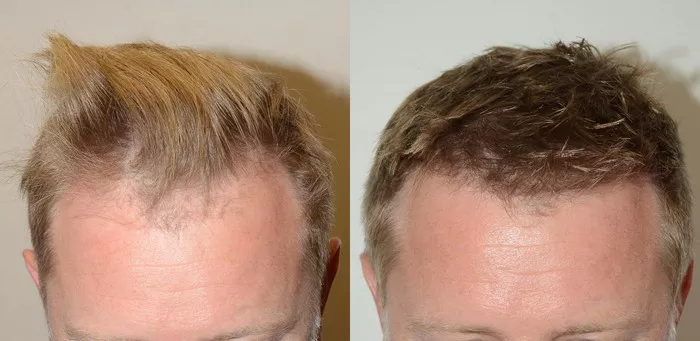Hair transplants have become increasingly popular as a solution for hair loss. However, many potential candidates have questions and concerns about the procedure, particularly regarding whether they need to shave their heads beforehand. This article will explore the necessity of shaving, the implications for various hair transplant techniques, and factors to consider before your procedure.
Understanding Hair Transplants
What is a Hair Transplant?
A hair transplant is a surgical procedure that involves relocating hair follicles from a donor site (typically the back or sides of the scalp) to areas of thinning or balding. The most common methods are Follicular Unit Extraction (FUE) and Follicular Unit Transplantation (FUT).
Key Benefits of Hair Transplants
Natural Results: Transplanted hair typically looks and feels natural.
Permanent Solution: The results can last a lifetime, making it a long-term solution for hair loss.
Minimal Recovery Time: Most patients can return to normal activities within a few days.
Do You Need to Shave Your Head?
The Case for Shaving
Ease of Access: Shaving allows the surgeon to access the donor and recipient sites more easily, making the procedure smoother and quicker.
Precision: A shaved head can help the surgeon see the hair follicles more clearly, leading to better extraction and placement.
Cleanliness: A shaved scalp is easier to clean and reduces the risk of infection.
The Case Against Shaving
Personal Preference: Some individuals may not feel comfortable shaving their heads and may prefer to keep their hair.
Less Noticeable: If you have longer hair, you can potentially hide the donor area, making it less noticeable post-surgery.
Techniques That Don’t Require Shaving: Certain methods allow for a more targeted approach that doesn’t necessitate complete shaving.
Different Hair Transplant Techniques
1. Follicular Unit Extraction (FUE)
Shaving Requirement: In most cases, the donor area is shaved, but some clinics offer “no-shave” FUE techniques, where only the donor follicles are trimmed.
Advantages:
Minimal scarring.
Less recovery time.
Considerations: While FUE is more adaptable, opting for a “no-shave” technique may limit the surgeon’s ability to extract follicles efficiently.
2. Follicular Unit Transplantation (FUT)
Shaving Requirement: Typically, the back of the head is shaved to access the donor strip of hair.
Advantages:
More follicles can be transplanted in one session.
Often less expensive than FUE.
Considerations: The shaving is usually more extensive with FUT, and a linear scar is left, which is typically concealed by longer hair.
Factors to Consider Before Shaving
1. Type of Hair Loss
Understanding your hair loss pattern can help determine the best approach. Those with extensive thinning may be more inclined to shave, while others may prefer to maintain some length.
2. Hair Type and Texture
Curly or wavy hair may require different considerations than straight hair, affecting the decision to shave.
3. Personal Lifestyle
Consider your lifestyle and how comfortable you are with a shaved head. For some, the change may be significant, while others may embrace the new look.
4. Surgeon’s Recommendations
Ultimately, consulting with your surgeon is crucial. They can provide personalized advice based on your unique situation, hair type, and the chosen transplant technique.
Preparing for a Hair Transplant
1. Initial Consultation
During your consultation, discuss your concerns about shaving and explore all available options. The surgeon will evaluate your hair loss pattern and recommend the best approach.
2. Pre-Procedure Instructions
Follow any pre-operative guidelines provided by your surgeon, including avoiding blood thinners, alcohol, and smoking.
3. Emotional Preparedness
Prepare yourself mentally for the changes that will come with a hair transplant, including potential temporary hair loss before new growth occurs.
Post-Operative Care
1. Follow-Up Appointments
Attend all scheduled follow-up appointments to monitor healing and hair growth. Your surgeon will provide post-operative care instructions.
2. Avoiding Sun Exposure
Protect your scalp from direct sunlight to prevent irritation and promote healing.
3. Gentle Hair Care
Use mild shampoos and avoid vigorous washing for the first few weeks after the transplant.
Conclusion
The decision to shave your head for a hair transplant is a personal one, influenced by various factors, including the technique used and individual preferences. While shaving can facilitate a smoother procedure and enhance precision, many options exist that allow for a more tailored approach. Always consult with your surgeon to discuss the best course of action for your specific needs and circumstances. By understanding the process and preparing accordingly, you can embark on your hair restoration journey with confidence and ease.
Related topics:
- Hair Transplant: How Long Does It Take? A Comprehensive Guide
- The Best Hats to Wear After a Hair Transplant: A Full Guide
- Can Hair Transplant Fail? Knowing the Risks and Realities


